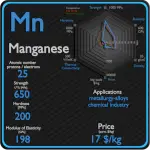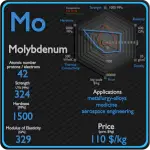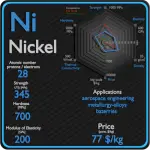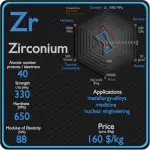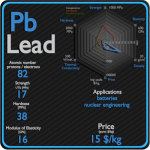This article contains comparison of key thermal and atomic properties of chromium and iron, two comparable chemical elements from the periodic table. It also contains basic descriptions and applications of both elements. Chromium vs Iron.
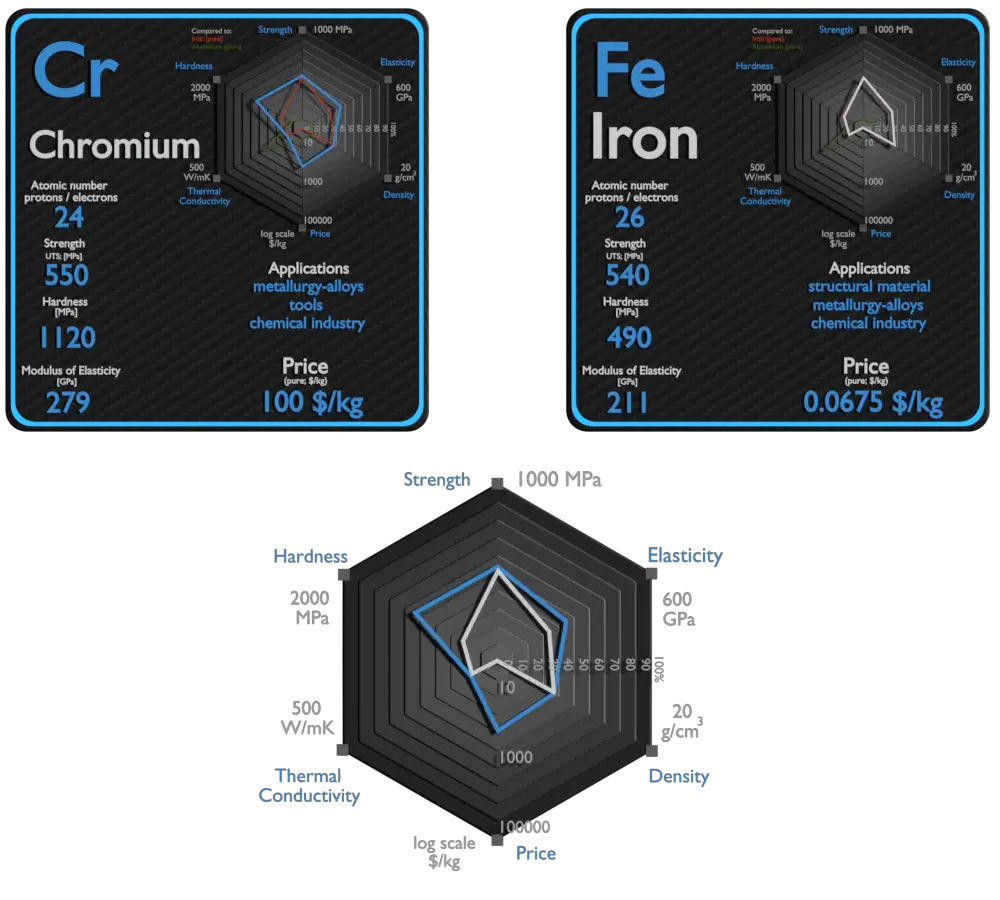
Chromium and Iron – About Elements
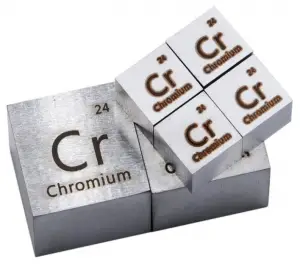
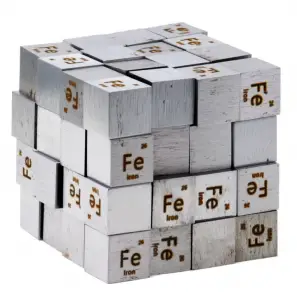
Source: www.luciteria.com
Chromium and Iron – Applications
Chromium
Chromium is one of the most important and indispensable industrial metals because of its hardness and resistance to corrosion. But it is used for more than the production of stainless steel and nonferrous alloys; it is also used to create pigments and chemicals used to process leather. In metallurgy, Chromium increases hardness, strength, and corrosion resistance. The strengthening effect of forming stable metal carbides at the grain boundaries and the strong increase in corrosion resistance made chromium an important alloying material for steel. Generally speaking, the concentration specified for most grades is approximately 4%. This level appears to result in the best balance between hardness and toughness. Chromium plays an important role in the hardening mechanism and is considered irreplaceable. At higher temperatures, chromium contributes increased strength. It is ordinarily used for applications of this nature in conjunction with molybdenum. The resistance of stainless steels is based on passivation. For passivation to occur and remain stable, the Fe-Cr alloy must have a minimum chromium content of about 11% by weight, above which passivity can occur and below which it is impossible.
Iron
Iron is used in numerous sectors such as electronics, manufacturing, automotive, and construction and building. Iron is the most widely used of all the metals, accounting for over 90% of worldwide metal produc0tion. Its low cost and high strength often make it the material of choice material to withstand stress or transmit forces, such as the construction of machinery and machine tools, rails, automobiles, ship hulls, concrete reinforcing bars, and the load-carrying framework of buildings. Since pure iron is quite soft, it is most commonly combined with alloying elements to make steel. Steels are iron–carbon alloys that may contain appreciable concentrations of other alloying elements. Adding a small amount of non-metallic carbon to iron trades its great ductility for the greater strength. Due to its very-high strength, but still substantial toughness, and its ability to be greatly altered by heat treatment, steel is one of the most useful and common ferrous alloy in modern use. There are thousands of alloys that have different compositions and/or heat treatments. The mechanical properties are sensitive to the content of carbon, which is normally less than 1.0 wt%.
Chromium and Iron – Comparison in Table
| Element | Chromium | Iron |
| Density | 7.14 g/cm3 | 7.874 g/cm3 |
| Ultimate Tensile Strength | 550 MPa | 540 MPa |
| Yield Strength | 131 MPa | 50 MPa |
| Young’s Modulus of Elasticity | 279 GPa | 211 GPa |
| Mohs Scale | 8.5 | 4.5 |
| Brinell Hardness | 1120 MPa | 490 MPa |
| Vickers Hardness | 1060 MPa | 608 MPa |
| Melting Point | 1907 °C | 1538 °C |
| Boiling Point | 2671 °C | 2861 °C |
| Thermal Conductivity | 93.7 W/mK | 80.2 W/mK |
| Thermal Expansion Coefficient | 4.9 µm/mK | 11.8 µm/mK |
| Specific Heat | 0.45 J/g K | 0.44 J/g K |
| Heat of Fusion | 16.9 kJ/mol | 13.8 kJ/mol |
| Heat of Vaporization | 344.3 kJ/mol | 349.6 kJ/mol |



